Impact and Performance of 8GB DDR4 RAM in Computing
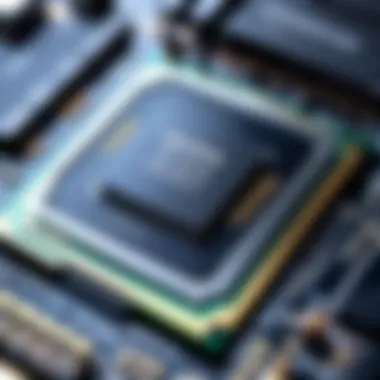
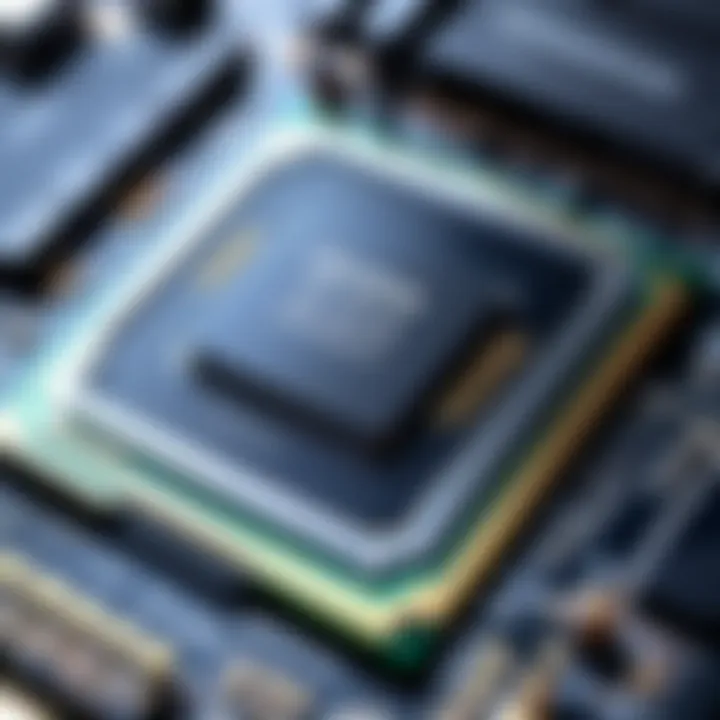
Intro
The landscape of computing has transformed rapidly over the past decade, pushing the boundaries of what's possible with hardware. At the heart of this evolution is memory, specifically RAM, which plays a vital role in system performance. Among the various types, 8GB DDR4 RAM has emerged as a linchpin in both gaming and professional environments. This article embarks on a comprehensive exploration of its impact, revealing how this memory type influences not just performance, but also user experience across a multitude of applications.
Product Overview
Brand Information
In the realm of RAM, several well-known names dominate the market like Corsair, Kingston, and G.SKILL. Each brand offers their unique spin on DDR4 memory, ensuring a wide variety of choices to meet different customer needs. For instance, Corsair's Vengeance LPX line is popular among gamers for its aesthetics and performance, while Kingston’s HyperX Fury is favored by those seeking reliability and speed.
Key Specifications
When dissecting 8GB DDR4 RAM, several specifications come into focus:
- Capacity: 8GB is often regarded as the sweet spot for gaming and everyday tasks.
- Speed: Common speeds range from 2400 MHz to 3200 MHz, with higher speeds providing increased potential for system responsiveness.
- Latency: Typically around CL16 or lower, latency plays a crucial role in performance.
Pricing
As of recent trends, prices for 8GB DDR4 RAM hover around $30 to $80, varying primarily based on brand and specifications. This cost-efficiency makes it an attractive option for upgrades without breaking the bank.
Performance Comparison
Benchmark Tests
Benchmarks serve as the measuring stick for performance, and various tests have shown that 8GB DDR4 RAM holds its ground against other configurations. For instance, in the popular Cinebench R20, systems equipped with 8GB DDR4 RAM often see scores that indicate a solid balance between efficiency and power. Additionally, games such as Call of Duty: Warzone demonstrate smoother experiences with adequate memory allocation, showing that the 8GB capacity is sufficient for modern titles.
Speed and Efficiency Comparisons
In the race for speed, DDR4 clearly outperforms its predecessor, DDR3, achieving greater bandwidth and lower power consumption. Comparisons compute that while 8GB DDR3 might cost less, the performance differential in intensive tasks often sways users towards DDR4. Ultimately, the efficiency gained with DDR4 not only enhances gaming experiences but also supports multitasking in professional environments.
Features and Technology
Unique Features
One major advantage of DDR4 RAM is its dual-channel architecture, which allows for more efficient data transfer. This feature is particularly beneficial in gaming scenarios where multiple processes run concurrently. Plugging in two 4GB modules instead of a single 8GB module can net a tangible performance boost.
Technological Advancements
DDR4 also ushers in newer technologies like ECC (Error-Correcting Code), which improves data integrity. This is of utmost importance in critical applications, such as data analysis and software development where data errors can lead to significant repercussions.
Compatibility with Other Devices
Most modern motherboards support DDR4 out-of-the-box, making it a compatible choice for upgrades. However, gamers and professionals alike should verify the motherboard’s specifications, as older systems may not accommodate this RAM type.
Pros and Cons
Strengths of the Product
Pros of 8GB DDR4 RAM include:
- Balanced Performance: Suitable for both gaming and multitasking.
- Scalability: Easy to upgrade if more memory is needed in the future.
- Compatibility: Widely supported in new devices.
Areas for Improvement
While 8GB DDR4 RAM is a robust option, its limitations include:
- Capacity Limitations: For heavy users or professionals, retaining only 8GB might limit performance potential.
- Single Channel Options: Using a single 8GB stick can cause a performance gap compared to dual-channel setups.
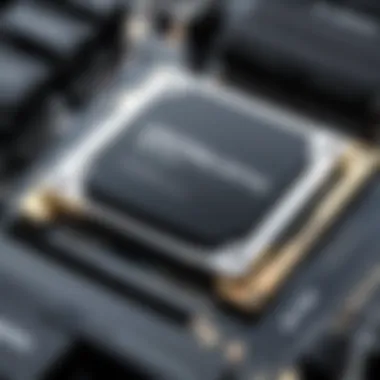
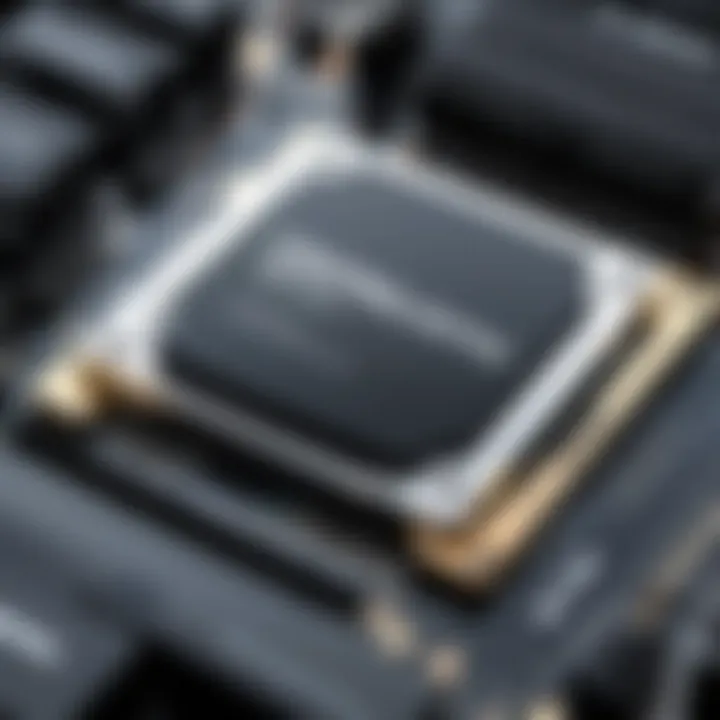
Value for Money
Cost-effectiveness
When considering performance relative to the cost, 8GB DDR4 RAM is a winning choice. It provides a tangible upgrade for budget-conscious consumers, particularly when paired with older hardware needing a boost.
Long-term Benefits
Investing in 8GB DDR4 offers numerous benefits over time, from enhanced performance in newer applications to ensuring that systems remain relevant as software requirements increase. Over the long run, the initial outlay can be offset by the extended lifespan and increased productivity.
Comparison with Similar Products
Unlike its DDR3 counterpart, which may appear cheaper upfront, DDR4's performance benefits can outweigh the initial cost difference. Consumers need to weigh short-term savings against long-term efficiency and capability, making 8GB DDR4 RAM a savvy investment for tech enthusiasts, gamers, and professionals alike.
Prelude to DDR4 RAM
In the world of computing, the significance of memory cannot be overstated. As applications demand more resources, the role of the Random Access Memory (RAM) has evolved tremendously. DDR4 RAM represents a pivotal development in this landscape, especially the 8GB variant, which has become a standard for a variety of computing tasks. Understanding DDR4's features equips users to make informed decisions regarding system upgrades, whether they're gamers seeking better performance or IT professionals managing enterprise systems.
Overview of DDR Memory Generations
Memory technology has transitioned through several generations, each improving on its predecessor. The history can be summarized as follows:
- DDR (Double Data Rate): The initial iteration offered significant improvements in speed over single data rate types.
- DDR2: This generation increased bandwidth and reduced power consumption, gaining traction in consumer desktops and laptops.
- DDR3: Further advancements led to better performance and efficiency, making it widely adopted in the early 2010s.
- DDR4: This current standard comes packed with enhancements like higher data rates and improved energy efficiency, allowing for faster calculations and lower operating temperatures.
The evolution reflects a consistent trend towards greater efficiency and performance, essential in today’s data-dependent environments where fast, reliable memory is crucial.
The Transition from DDR3 to DDR4
Switching from DDR3 to DDR4 was not just a simple upgrade; it was akin to changing gears in a high-performance vehicle. While DDR3 had served its purpose well, DDR4 introduced substantial improvements. Here are some key differences:
- Speed: DDR4 RAM typically starts at a speed of 2133 MT/s, compared to DDR3's 1066 MT/s to 2133 MT/s range.
- Capacity: DDR4 can support higher capacities, allowing up to 64GB per module, compared to DDR3's limitation of 16GB per module.
- Power Efficiency: DDR4 operates at a lower voltage (1.2V) than DDR3 (1.5V), which translates to less heat and longer battery life in portable devices.
Transitioning to DDR4 not only boosts speeds but also enables smoother multitasking and enhanced overall efficiency in computing. It is particularly beneficial for demanding applications in gaming and professional environments where lag can hinder performance.
"The leap from DDR3 to DDR4 signifies more than just a number change; it embodies the relentless pursuit of speed and efficiency in a data-driven world."
By understanding these fundamental shifts, users can appreciate the advantages and limitations that come with 8GB DDR4 RAM, setting the stage for deeper discussions about its performance and application in various computing scenarios.
Technical Specifications of 8GB DDR4 RAM
Understanding the technical specifications of 8GB DDR4 RAM is crucial in appreciating its impact on modern computing systems. These specifications determine how effectively the RAM can handle various tasks, influence system responsiveness, and affect overall performance. As we dissect the core elements, we will highlight the benefits and considerations surrounding 8GB DDR4 RAM that make it a fundamental component in contemporary computing.
Capacity and Configuration
The capacity of RAM, expressed in gigabytes, plays a pivotal role in system capabilities. An 8GB configuration strikes a sound balance for most everyday applications, whether casual gaming, web browsing, or handling office software. Users often find that this amount of RAM permits seamless operation without stuttering, as it allows for multiple applications to run concurrently without overwhelming the system.
However, it's essential to consider how the memory is organized. 8GB DDR4 RAM is typically found in dual-channel configurations, significantly enhancing performance by allowing simultaneous data access. This configuration can lead to improved data throughput and faster performance in multitasking situations, thus making it a very attractive choice for both gaming and productivity tasks.
"A well-designed memory setup can often mean the difference between sluggish load times and fluid gameplay."
Speed and Latency Considerations
Speed, measured in megahertz (MHz), references how fast RAM can read and write data. 8GB DDR4 RAM variants can range from 2133 MHz to even higher speeds like 3200 MHz and beyond. The higher the speed, the quicker data movement occurs, and the better the performance during demanding tasks. However, it's not just about speed; latency—measured in nanoseconds—also holds significant importance. DDR4 RAM features lower latency than its predecessors, contributing to minimizing delays during data retrieval.
In practical terms, this means that users can expect snappier performance from their systems when dealing with memory-intensive applications, gaming environments, and data processing tasks. Utilizing faster RAM speeds may provide the necessary boost when dealing with computations, especially in activities such as video editing or complex simulations.
Power Consumption Rates
While performance is vital, energy efficiency cannot be overlooked in today's environmentally conscious discourse. DDR4 has been designed to operate at lower voltage levels compared to earlier generations, typically drawing around 1.2 volts, which helps in reducing overall power consumption. This aspect is especially critical for mobile devices and laptops, as prolonged battery life significantly enhances user experiences.
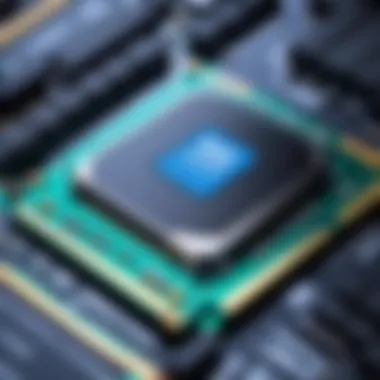
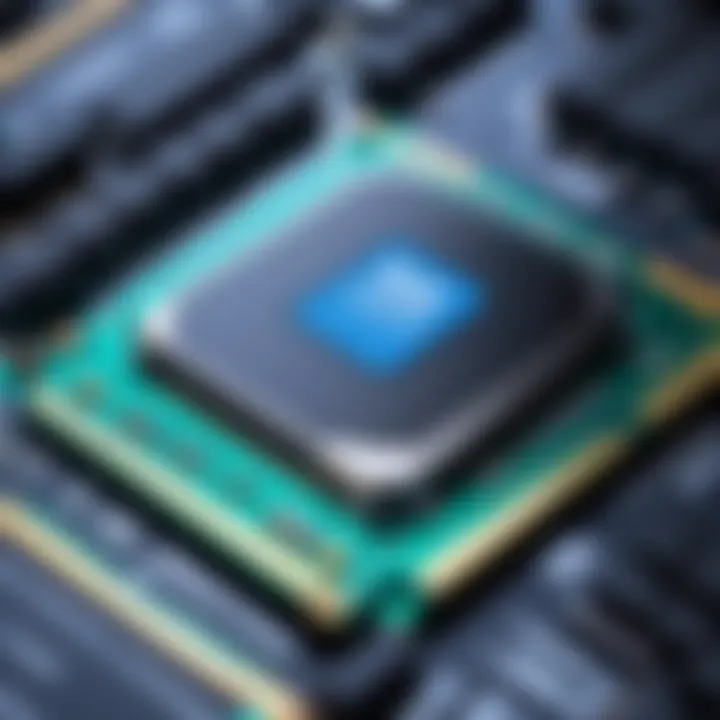
The implications of power consumption rates extend beyond simple energy bills. Lower energy demands contribute to less heat generation, underscoring system stability and prolonged lifespan of both RAM modules and the entire hardware setup.
In summary, the technical specifications of 8GB DDR4 RAM encapsulate not just its raw capacity and speed but the nuanced interplay of configuration, latency, and efficiency that collectively enhance computing experiences in meaningful ways.
Performance Analysis of 8GB DDR4 RAM
Understanding the performance of 8GB DDR4 RAM is crucial for anyone navigating the currents of modern computing. This section will shed light on how this memory tier stands amidst others, as well as its practical applications in everyday scenarios, whether gaming or professional tasks. Performance analysis is not solely about numerical figures; it’s about grasping the user experience and operational efficiency that the right RAM can bring to the table.
Benchmarking Against Other RAM Types
In the realm of memory technologies, benchmarking serves as a yardstick to measure the effectiveness of 8GB DDR4 RAM against its predecessors and contemporaries, particularly DDR3 and DDR5. Benchmarks provide a window into how well 8GB DDR4 performs in various tasks, from simple data processing to complex graphics rendering. Notably, DDR4 offers improvements in bandwidth and decreased latency compared to DDR3, leading to a more fluid experience in multitasking environments.
For instance, while running a series of synthetic tests, 8GB DDR4 RAM can demonstrate significant gains in memory read and write speeds compared to its predecessor, DDR3, often showing a performance uplift of around 20%. This is crucial, as faster RAM can lead to snappier application launches and better overall responsiveness, an essential factor for all users, from casual browsers to serious gamers.
Some key points to consider:
- Data Transfer Speeds: DDR4 can achieve speeds up to 3200 MT/s, outpacing many DDR3 modules.
- Latency: Although DDR4 has higher latency figures, its heightened bandwidth more than compensates for it in many applications.
- Power Efficiency: DDR4 operates at a lower voltage (1.2V) compared to DDR3 (1.5V), which can lead to overall power savings, especially in laptops and mobile devices.
Real-World Application Performance
Gaming Performance
When delving into gaming performance, 8GB DDR4 RAM stands out as a solid choice for many gamers. One of its key attributes is the ability to handle modern titles that demand substantial resources. A well-optimized 8GB DDR4 setup can deliver smooth frame rates and improved load times, which is essential in keeping players engaged during intense gaming sessions.
The unique feature of 8GB DDR4 in gaming lies in its balance of speed and capacity. This allows it to efficiently manage large texture files and numerous background processes, freeing up the CPU to focus on gameplay without lag. While many contemporary games recommend a minimum of 16GB for peak performance, an 8GB DDR4 setup can suffice for less demanding titles or when paired with a high-end graphics card.
Advantages include its adequate handle on processes in real-time, which provides a responsive gaming experience; however, the potential disadvantages might surface when running more resource-heavy applications simultaneously, pushing 8GB to its limits.
Multitasking and Productivity
Turning to multitasking, the 8GB configuration in DDR4 shines, particularly in environments where multiple applications are in play. The darting back and forth between a web browser, a document editor, and a media player requires a swift RAM capacity. When 8GB DDR4 RAM is in the mix, it makes such operations reasonably seamless.
One of the standout traits here is multitasking efficiency, allowing users to perform a range of tasks without encountering stutter or slowdown. The memory’s architecture supports simultaneous access to multiple applications, enhancing productivity especially for professionals working on data-heavy projects or research.
That said, while 8GB provides a substantial cushion for everyday tasks, heavy users might find themselves bumping against limitations once several advanced applications are loaded. In these scenarios, either optimizing individual software settings or considering an upgrade to 16GB or beyond could be prudent solutions.
"8GB DDR4 RAM strikes a balance between performance and price, offering an entry point for gamers and professionals alike who seek efficiency without breaking the bank."
In summary, the performance analysis of 8GB DDR4 RAM reveals a capable memory option with noteworthy benefits in gaming and productivity applications. Evaluating these aspects helps clarify whether this memory option aligns with the user's specific needs and computing habits. Understanding these realm helps any tech enthusiast or professional to make informed choices regarding memory upgrades and system configurations.
Comparative Advantages of 8GB DDR4 RAM
The discussion on 8GB DDR4 RAM doesn’t just center on its performance. It also delves into the array of advantages this RAM brings to the table, particularly when we position it side by side with other memory types. In this fast-paced tech landscape, understanding these pros can significantly influence a user's buying decision, especially when they're often inundated with choices. Here, we highlight two primary aspects: its cost-effectiveness and compatibility with existing systems.
Cost-Effectiveness and Value Proposition
When it comes to choosing computer components, cost often weighs heavily on the decision. This is particularly true for RAM, where prices can fluctuate significantly based on brand, speed, and specifications. The 8GB DDR4 RAM strikes a notable balance between performance and price. For many, it’s a sweet spot, allowing users to enjoy the advancements of DDR4 technology without breaking the bank.
Here are a few points to consider regarding its cost-effectiveness:
- Affordability for Gamers and Professionals: The average cost of 8GB DDR4 modules is often lower than higher capacity options like 16GB and 32GB modules. This makes it appealing for budgets that prioritize performance in tasks such as gaming or multitasking without requiring top-tier systems.
- Upgrade Potential: For users who anticipate needing more memory in the future, starting with 8GB DDR4 can be a prudent choice. Systems not maxed out on RAM allow for simple upgrades later on, which can be more cost-effective than investing in larger initial setups that may not be fully utilized.
- Improved Performance over DDR3: While the price might be a bit higher than previous generations like DDR3, the performance gain is often worth the difference. Users experience faster processing speeds and reduced load times, which can enhance their overall computing experiences—this value proposition shouldn’t be underestimated.
Compatibility with Current Systems
An attribute that often goes unnoticed when selecting RAM is how well it plays with existing hardware. In the realm of 8GB DDR4 RAM, compatibility is a considerable advantage. Many modern motherboards support this memory type, making it a likely candidate for users looking to upgrade without technology roadblocks.
Key compatibility factors include:
- Widespread Adoption: DDR4 is now widely supported across a multitude of platforms. Whether it’s a desktop or laptop, chances are that contemporary systems can accommodate this RAM format. This broad acceptance simplifies the upgrade path for many.
- Backward Compatibility Considerations: Some motherboards offer backward compatibility features, meaning that users can potentially replace DDR3 with DDR4. Although configurations and compatibility must be verified, it opens up additional upgrade possibilities for older systems less inclined to newer technology.
- Future-proofing Your System: As software evolves, it demands more from hardware. By opting for 8GB DDR4 RAM, users position themselves optimally for upcoming software requirements. This strategic foresight can eliminate the need for premature upgrades in just a couple of years.
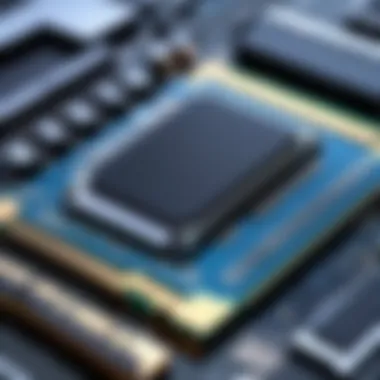
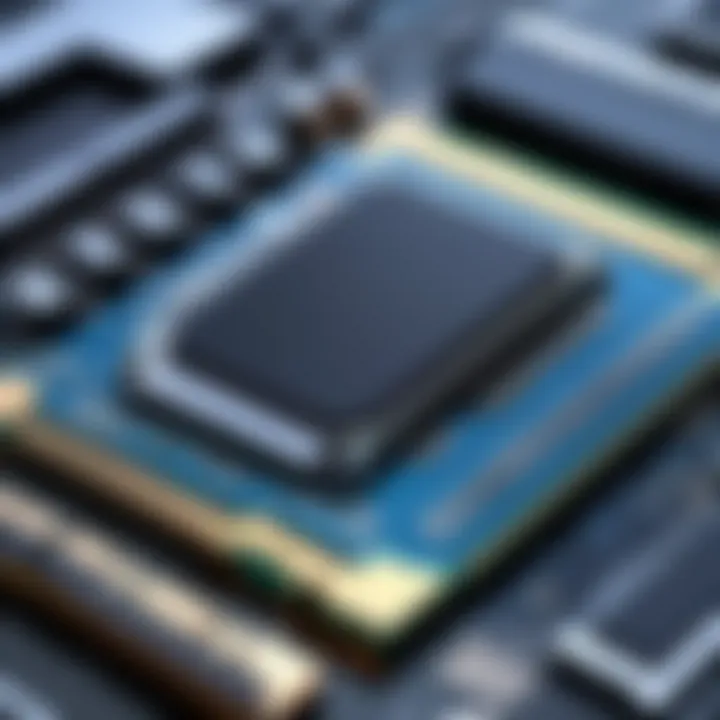
"Investing in 8GB DDR4 RAM is like planting a seed. It offers the roots for growth in both performance and system capability."
In sum, the comparative advantages of 8GB DDR4 RAM extend beyond mere numbers. They offer a compelling narrative embodying both economic reason and adaptability. This side of DDR4 RAM solidifies its relevance in contemporary computing, especially when examined through the lenses of cost-effectiveness and system compatibility. Through these advantages, users can make informed decisions that align with their computing needs.
Limitations of 8GB DDR4 RAM
In the rapidly evolving landscape of computing, it's essential to understand that while 8GB DDR4 RAM has its strengths, it also comes with its fair share of limitations. This topic is crucial for users, tech enthusiasts, and professionals alike, as knowing the boundaries of 8GB RAM can very much influence hardware decisions and expectations.
The truth is, 8GB of RAM can feel like a decent buffer for many everyday tasks. However, it starts falling short in more demanding scenarios. Applications are getting heavier and multitasking has become a norm rather than an exception. Many users quickly find themselves grappling with performance drops when pushing their systems to the limit. The importance of addressing these limitations lies in setting realistic expectations, helping users make informed choices about their computing needs.
When Is 8GB Not Enough?
In various use cases, having only 8GB of DDR4 RAM raises flags. Here are some instances when 8GB might not suffice:
- Gaming: Modern games are increasingly resource-hungry. Titles like Cyberpunk 2077 or Call of Duty: Warzone recommend 12GB or more for optimal performance. Running these games with only 8GB can lead to stuttering and longer load times.
- Professional Applications: For graphic designers, video editors, and software developers, applications such as Adobe Premiere Pro or Visual Studio can chew through RAM like butter. It's not uncommon for these professionals to require 16GB or even 32GB to maintain fluidity in their workflows.
- Virtual Machines: Users running virtual environments for testing or development may encounter serious limitations. Each virtual machine consumes a share of the system's RAM, quickly using up the 8GB limit and forcing the host OS to compete for memory, causing severe slowdowns.
- Multitasking: If you're the type to keep dozens of browser tabs open while running a media player and a few other applications, your system can quickly run out of breathing room. This not only degrades performance but can also lead to application crashes.
All in all, users looking to engage in more demanding tasks may find 8GB to be a limitation rather than an asset.
Technological Advancements on the Horizon
As technology progresses, so do user demands. With the upcoming advancements in RAM technology, the expectations regarding capacity are likely to change. Considered advancements include:
- Higher Capacity Modules: Manufacturers are rapidly developing memory chips that can go beyond the traditional 8GB or even 16GB modules. There's a push towards 32GB and higher capacities becoming standard in mid-range systems.
- DDR5 RAM: The shift towards DDR5 brings improvements in speed and bandwidth. This not only allows for faster data transfers but also creates a more efficient usage of memory.
- Memory Optimization Software: As multitasking becomes a constant, software solutions are emerging to optimize memory usage. Tools that intelligently allocate RAM based on active applications can enhance performance even with lower overall capacity.
- AI and Machine Learning: These fields are pushing the boundaries of what's possible with hardware. AI-driven optimizations in memory management could make even modest setups run smoother than before.
Considering the shift to higher requirements in applications, being informed about these advancements is crucial. As applications demand more from RAM, users need to anticipate future needs or risk being left behind.
Future Trends in RAM Development
The realm of computer memory is rapidly changing, influenced heavily by emerging technologies and user demands. As systems become more complex and applications grow in their requirements, understanding the future trends in RAM development becomes crucial for both consumers and industry professionals alike. From gaming enthusiasts seeking high performance to IT professionals focusing on efficiency and speed, the evolution of RAM can significantly shape their choices.
The Evolution of Memory Technology
In the world of RAM, change is the only constant. Over the years, we've witnessed a transformation that goes beyond simple capacity increases; it encapsulates improvements in speed, energy efficiency, and overall system integration.
- Higher Capacities: We’ve moved from having 4GB being the norm to 8GB becoming the base threshold in many systems today. As we look ahead, we can expect to see capacities reach 16GB and 32GB becoming mainstream, catering to the demands of heavy multitasking and resource-intensive applications.
- Enhanced Speed: The introduction of dual- and quad-channel configurations has bolstered throughput significantly. Innovations like DDR5 RAM, which is already on the forefront, promise faster data rates and lower power draw, making high-performance computing more accessible.
- Integration with GPUs: There’s a visible trend toward tighter integration between RAM and GPU memory, especially with the rise of gaming. This isn't just about speed—it's also about optimizing data access and minimizing bottlenecks, ensuring smoother gameplay and better rendering capabilities.
These advancements not only enhance performance but also challenge manufacturers to develop increasingly sophisticated production techniques and supply chains.
Impacts of AI and Machine Learning
Artificial Intelligence (AI) and machine learning (ML) are not just buzzwords. They are catalysts that are reshaping how RAM functions and what it needs to achieve. As these technologies evolve and permeate various industries, their impact on RAM design and implementation becomes evident.
- Data-Driven Decisions: AI algorithms rely heavily on large data sets and immense computational power. Hence, RAM needs to keep pace. Systems leveraging AI for real-time processing will benefit from the enhancements in RAM speed and efficiency, which will enable quicker data retrieval and processing.
- Increased Demand for Bandwidth: With AI applications such as deep learning requiring vast quantities of data to be processed simultaneously, the demand for RAM with high bandwidth is more crucial than ever. There’s likely going to be a push towards memory solutions that can handle the heavy lifting of data while maintaining performance integrity.
- Custom Solutions: Companies are beginning to design specialized RAM configurations tailored specifically for AI tasks. This means that rather than a one-size-fits-all solution, we will see more diversity in memory products geared towards varying workloads and applications.
"The next generation of RAM will not just be about capacity but will also cater to specialization, pushing conventional boundaries to meet the unique demands of different sectors."
In summary, staying ahead of the curve in RAM technology is essential. As we witness an influx of AI and more sophisticated applications into the computing sphere, RAM designs must adapt, offering higher performance, greater efficiency, and specialized solutions tailored to specific needs. For all users—from gamers to cloud professionals—the implications of these trends will shape not only what they can do with their technology but also how they choose their hardware moving forward.
Culmination
In today's tech-savvy world, the role of RAM is indispensable. This article explored the significance of 8GB DDR4 RAM in contemporary computing, marking its relevance in various applications. As more demanding software emerges, understanding how this memory type affects system behavior is crucial for performance enthusiasts and casual users alike.
Summary of Key Findings
- Technical Specs: 8GB DDR4 RAM provides a balance of speed and efficiency, standing out with lower power consumption and higher transfer rates compared to previous generations.
- Real-World Performance: Whether for gaming or multitasking, having 8GB enables smoother experiences in typical use cases, handling common software without noticeable hiccups.
- Cost-Effectiveness: Given its competitive pricing, the upgrade to 8GB DDR4 offers excellent value, catering to gamers and professionals who need reliable performance without breaking the bank.
- Compatibility: Most modern systems support DDR4, making it a safe bet for compatibility across various platforms, alleviating upgrade-related concerns.
This emphasis on key findings not only sheds light on the technical prowess of the 8GB DDR4 memory but also contextualizes it regarding current user requirements and computing trends.
Final Recommendations for Users
When considering an upgrade or new build, here are a few pointers to keep in mind:
- Assess Your Needs: If your work involves intense applications like video editing or running virtual machines, consider greater RAM capacity—but 8GB is generally sufficient for everyday tasks.
- Future-Proofing: While 8GB works well today, keep an eye on system requirements for new games or software updates in the future. If you plan to keep your system for longer, you might want to invest in 16GB or more.
- Check Compatibility: Always verify that your motherboard can support DDR4 RAM before purchase. Mismatched components can lead to wasted investments.
- Look for Reviews and Benchmarks: Popular brands like Corsair and Kingston provide reliable options. Check reviews to gauge real-world performance relevant to your applications.
In summary, the journey into memory technology reveals a landscape driven by necessity and progress. Cultivating an understanding of 8GB DDR4 RAM not only informs purchasing decisions but also enhances overall user experience. Embrace the insights shared here to navigate your computing endeavors effectively.







